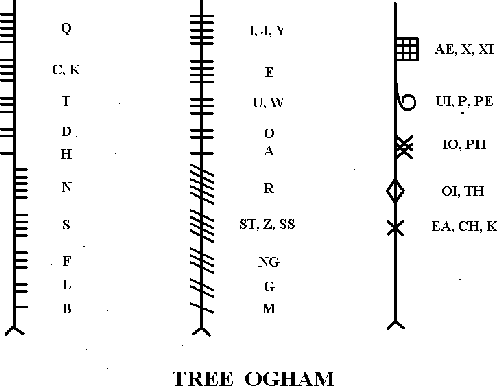

As result, for me, use of historic key is not a blocker.
#OGHAM FEWS HOW TO#
I am not aware about any good way to achieve that (is there writeup/plan how to achieve this?). I am not entirely sure is it really possible to do in the objective way. But it would require redefining historic= wayside_shrine and other - without that it is just more confusing. I understand people wishing to have historic key for "really historic, not just old, must be important". I would argue that modern reproductions fall under tourism= artwork, even if it is con art in some cases. We can't realistically do anything about older values but we shouldn't continue to treat historic=* as a primary key. New schemes for mapping objects should not use anything other than historic= yes because there is always the possibility of modern reproductions, which would then require us to come up with a new way of tagging non-historic versions or to map non-historic objects as historic. It was approved with 14 votes for, 1 vote against and 1 abstention. Suggested icon with the inscription reading "OSM" (from bottom to top). If you haven't transcribed the inscription yourself, please give your source. What type of stone is this (sandstone/ granite etc)? Standing upright, 1.67m in height above ground it has not been moved) should be assumed to be the default If the stone has been moved from its original place, add moved= yes. This tag is purely optional, inscription=* is usually sufficient Transcription of the text of the inscription in Latin alphabet The text of the inscription in Ogham characters, as written on the stone. Use a well established (for example Wikipedia page or other OpenSource) and verifyiable (see source) name. Add name=*, preferably using an established name used in research literature. Set a node and add historic= ogham_stone.

In this Time Team episode (Spoiler alert!) they find an stone that has ogham on it. Query for name~Ogham shows 20 mapped in Ireland, Wales and Scotland: overpass-turbo Examples Since they come in different sizes, a decision between megalith and minilith should be avoided. Ogham is the earliest form of writing in Ireland and stones bearing Ogham inscriptions are part of the National heritage in Ireland and could thus be mapped.


 0 kommentar(er)
0 kommentar(er)
